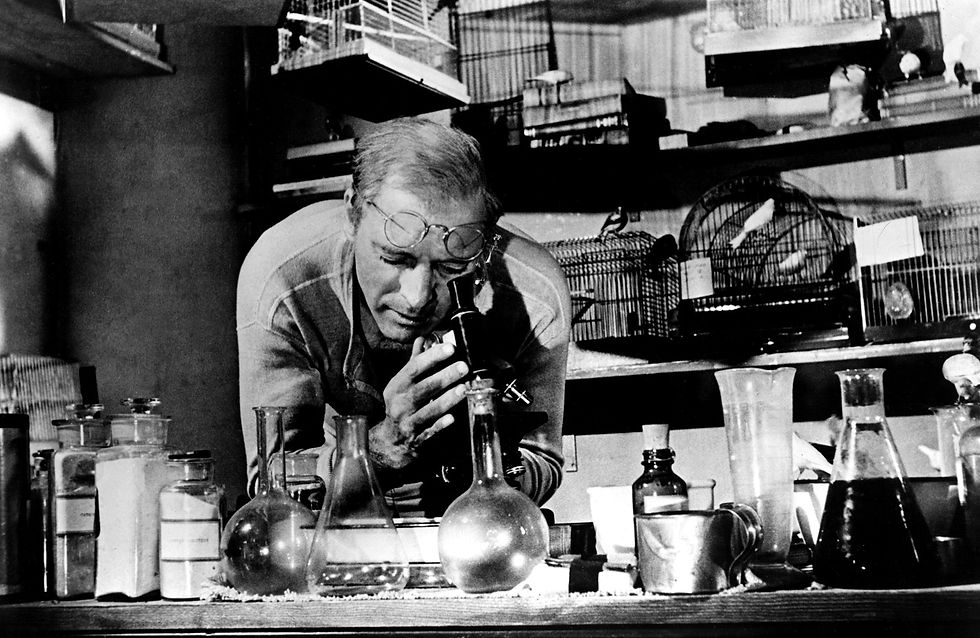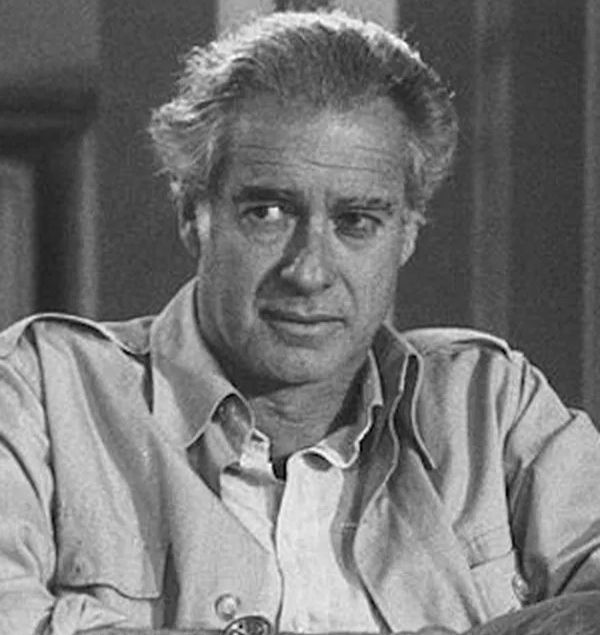Birdman of Alcatraz (1962)
- Soames Inscker

- Nov 13
- 6 min read

Released in 1962, Birdman of Alcatraz remains one of the most thoughtful and humane prison dramas in American cinema. Directed by John Frankenheimer and anchored by a towering performance from Burt Lancaster, the film transcends its genre to explore profound questions of redemption, isolation, and the indomitable human spirit. Though its subject, the infamous prisoner Robert Stroud, was a far more complex and controversial figure in reality, Frankenheimer’s film turns his story into a meditation on transformation — a man who finds purpose and compassion within the bleakest of confines.
The story begins in the early years of the 20th century with Robert Stroud (Burt Lancaster), a volatile and defiant prisoner serving a long sentence in the U.S. federal prison system. Stroud is introduced as a man of fierce temper and deep resentment toward authority, a habitual rule-breaker whose confrontational nature repeatedly brings him into conflict with wardens and guards.
After an act of violence that results in the death of a prison guard, Stroud is sentenced to life in solitary confinement — a punishment that effectively buries him alive within the walls of Leavenworth Prison. It is here, amid crushing solitude, that he discovers an unlikely source of redemption: the care and study of birds.
When Stroud finds an injured sparrow in the exercise yard, he begins nursing it back to health. This small act of compassion gradually evolves into a consuming passion. Over the years, he becomes an expert ornithologist, breeding and studying birds in his cell, conducting experiments, and publishing respected works on avian diseases. His achievements earn him international recognition and transform his prison existence into something extraordinary. Yet despite his intellectual and emotional evolution, the penal system remains inflexible. Stroud’s transfer to Alcatraz — where the keeping of animals is forbidden — forces him to confront the limits of his freedom and the tragic irony of his confinement.

Burt Lancaster’s portrayal of Robert Stroud is one of the defining performances of his career. Known for his physicality and commanding screen presence, Lancaster uses both qualities here but tempers them with a quiet dignity and emotional restraint. His transformation from violent inmate to thoughtful naturalist is conveyed with such conviction that the audience fully believes in his redemption.
Lancaster’s eyes, expressive yet often cold in the early scenes, soften as Stroud’s world expands through his connection with the birds. His performance captures the paradox at the heart of the character: a man who achieves inner freedom even while physically imprisoned. There is a striking absence of sentimentality; Lancaster does not seek to excuse Stroud’s crimes, but rather to illuminate the humanity that emerges in spite of them.
It is an extraordinary feat of sustained acting — much of the film confines him to a single cell, yet his presence dominates every frame. For this role, Lancaster received an Academy Award nomination for Best Actor, and rightly so.
The supporting cast enriches the film’s emotional and moral complexity. Karl Malden, as the authoritarian Warden Harvey Shoemaker, delivers an outstanding performance as Stroud’s long-term adversary. Malden avoids caricature, portraying the warden not as cruel but as a rigid embodiment of institutional control — a man who believes in order above all else. The intellectual duel between Stroud and Shoemaker provides much of the film’s dramatic tension.
Neville Brand, as Bull Ransom, offers a quietly affecting portrayal of a guard who becomes one of Stroud’s few friends, providing a human link between the prisoner and the outside world. Thelma Ritter, as Stroud’s possessive mother, gives one of her finest performances. Her relationship with her son is complex and ultimately tragic — their mutual dependence becomes another form of imprisonment. Betty Field, as Stella Johnson, the bird dealer who becomes Stroud’s companion and later his wife, adds warmth and humanity, while Telly Savalas (in one of his earliest roles) brings a rough-edged charm to a fellow inmate.
John Frankenheimer’s direction is assured, precise, and deeply empathetic. Having established himself as one of the great stylists of early 1960s American cinema, Frankenheimer brings to Birdman of Alcatraz the same qualities that would later define The Manchurian Candidate and The Train: meticulous composition, psychological depth, and moral seriousness.
The black-and-white cinematography by Burnett Guffey is magnificent. The camera lingers on the claustrophobic confines of Stroud’s cell, turning its iron bars and stark lighting into visual metaphors for confinement and resilience. Guffey’s use of contrast — between light streaming through a barred window and the shadowed austerity of the prison — mirrors Stroud’s journey from darkness to enlightenment.
Frankenheimer’s visual discipline heightens the sense of isolation. Long, unbroken shots and careful framing give the film a contemplative rhythm. He refuses to romanticise Stroud’s experience; instead, he allows the monotony and repetition of prison life to shape the film’s texture. The pacing, deliberate and patient, mirrors the slow process of Stroud’s transformation.
At its core, Birdman of Alcatraz is a film about redemption through knowledge and compassion. It poses profound questions about the capacity for change, the purpose of punishment, and the definition of humanity within systems designed to strip it away.
The birds serve as both literal and symbolic agents of liberation. Through them, Stroud discovers empathy, patience, and intellectual curiosity. They represent life, fragility, and the possibility of flight — all things denied to him. His relationship with the birds mirrors the journey of his soul: from aggression to understanding, from isolation to connection.
Frankenheimer and screenwriter Guy Trosper also examine the moral rigidity of institutions. The prison, for all its order and discipline, is depicted as a place where moral growth is stifled rather than encouraged. The conflict between Stroud and the warden becomes an allegory for the struggle between individuality and authority, compassion and control.
The film’s philosophical undercurrents — reminiscent at times of Dostoevsky — suggest that redemption is an internal process, independent of social forgiveness. Stroud’s achievements cannot erase his crime, yet they affirm his humanity. In this sense, Birdman of Alcatraz is both an indictment of the penal system and a celebration of the human capacity for transformation.
While the film’s emotional truth is powerful, it should be noted that its portrayal of Robert Stroud is heavily romanticised. The real Stroud, according to prison records and later accounts, was far more violent and manipulative than the film suggests. He did indeed become an accomplished ornithologist, but his relationships and behaviour were considerably more troubled than Frankenheimer’s sympathetic version implies.
Nevertheless, the film’s aim is not strict biography but moral exploration. It transforms the story into a parable about redemption and the resilience of the human mind under duress. As such, its departures from fact serve the larger emotional and thematic truth that Frankenheimer sought to convey.
Elmer Bernstein’s musical score is characteristically rich and restrained, underscoring the film’s emotional gravity without sentimentality. The score balances moments of lyrical tenderness — particularly in scenes involving the birds — with passages of sombre restraint, reflecting both the claustrophobic environment and Stroud’s gradual spiritual awakening.
The sound design is equally meticulous. The faint flutter of wings, the clinking of metal food trays, the echo of footsteps along prison corridors — all are employed to create a vivid sense of environment. Silence, too, becomes an expressive tool, conveying both loneliness and inner stillness.
Upon its release, Birdman of Alcatraz received widespread critical acclaim. Audiences and critics alike praised its intelligence, moral seriousness, and emotional power. Burt Lancaster’s performance was hailed as one of the year’s finest, earning him an Academy Award nomination for Best Actor. The film also garnered nominations for Karl Malden, Thelma Ritter, and cinematographer Burnett Guffey.
Over time, Birdman of Alcatraz has come to be regarded as one of the definitive prison dramas, influencing later films such as Papillon (1973), The Shawshank Redemption (1994), and The Green Mile (1999). Its combination of introspective storytelling, moral inquiry, and humanist vision set a standard that few successors have matched.
For director John Frankenheimer, it marked an early masterpiece — a film that showcased his extraordinary ability to merge technical precision with emotional depth. It remains one of the most compassionate and morally complex works of his career.

Birdman of Alcatraz is more than a story of one man’s redemption; it is an exploration of what it means to be human in the most inhuman of circumstances. Through Burt Lancaster’s commanding performance and John Frankenheimer’s measured, intelligent direction, the film achieves a rare blend of realism and poetry.
It asks us to consider whether a man can change, whether the soul can find freedom even in a cage, and whether the act of caring — for a bird, for an idea, for life itself — can restore dignity where society has withdrawn it.
Sixty years on, Birdman of Alcatraz retains its emotional power and moral resonance. It stands not only as one of the great American prison dramas, but as a timeless meditation on compassion, perseverance, and the possibility of grace.





